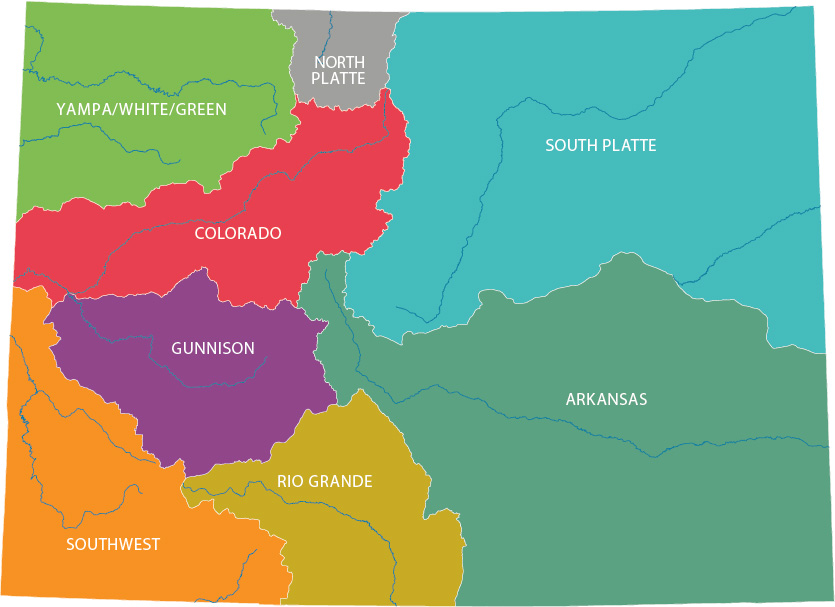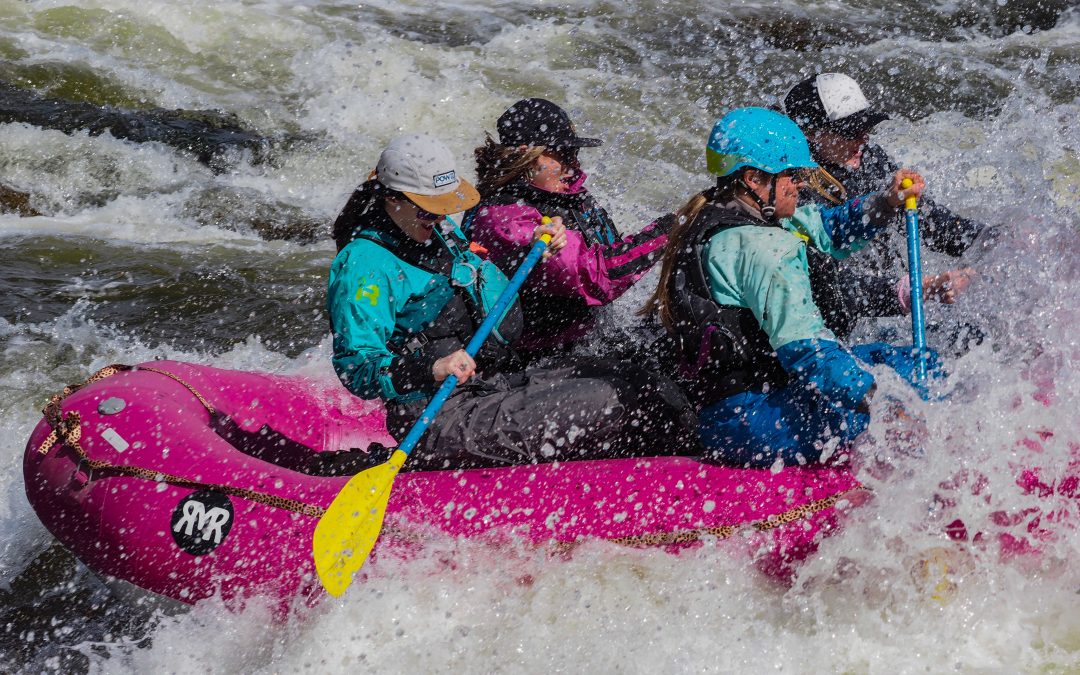Colorado’s bountiful snowpack is beginning to melt, and stream and river flows are rising. If current predictions for spring runoff stay on track this could be the longest stretch of boatable days seen on Colorado’s rivers in over a decade, including a rare opportunity to float southwestern Colorado’s spectacular 240-mile-long Dolores River.
“We haven’t seen this kind of season since 2011,” said Erin Walter, a hydrologist for the National Weather Service based in Grand Junction. “All the basins are doing well.”
The Dolores Basin, in southwestern Colorado, has the highest snowpack in the state, at 254% of average. The Gunnison River Basin stands at 169%, the upper Yampa Basin is at 152%, while the combined Animas, San Miguel, San Juan and Dolores are collectively at 192%. The lowest snowpack numbers are in the South Platte Basin at 98% and the Arkansas Basin at 78%.

“This is definitely one for the record books,” said Kestrel Kunz, of American Whitewater. “As a boater I’m excited. This healthy snowpack is something that everyone can be excited about, regardless of whether you’re a river runner, rancher or restaurant owner.”
With that healthy snowpack and higher water comes danger, especially for beginning boaters. Rivers are faster and colder, the difficulty of rapids increases and there is more debris — like fallen trees — in the water and low bridges to watch out for. “Since the pandemic more people have gotten into river recreation so a large part of the population hasn’t seen these kinds of flows,” said Kunz. “We have to make sure people are accessing the flows and making good decisions about river safety.”
One of the epicenters of this season’s higher flows is Almont in the Gunnison River Basin where the East, Taylor and Gunnison rivers come together. The peak flow of the combined rivers may reach a 100-year high, according to the National Weather Service.

A fisherman lets his lure drift with the current in the Gunnison River while floating downriver. (Dean Krakel photo)
“High water is a good problem to have,” said Dirk Schumacher, outfitting manager for Three Rivers Rafting in Almont. “The projections we’re looking at right now, the river’s going to be high. High but not un-runnable. At normal flows, these are very straightforward Class 3 rivers. At higher water … everything just happens a lot faster.”
Schumacher was referring to a river flow rating system in which flows are rated from Class 1 to 5, with 5 being the highest intensity.
Despite the lower snowpack numbers in the Arkansas River Basin, Arkansas Headwaters Recreation Area park manager Tom Waters is optimistic. “We’re looking at a really good year,” Waters said. “It’s going to be a promising season for rafting and the fishery. I think we’ll see high water but we don’t anticipate really high water or really extended high water. People are already fishing and floating here.”
But it is the southwestern corner of the state, on the Dolores River, that is generating the most excitement, said Andy Neinas of Echo Canyon Outfitters in Canon City.
“The Dolores is a gem among gems,” Neinas said. “But it’s a river that never runs. There hasn’t been a meaningful boating season on the Dolores in 10 years or longer. This year Americans are going to get to see a wonderful resource that has not been available to them.”

A group of packarafters launch into the Dolores River Canyon, Apr. 22, 2023, near Bedrock. (Hugh Carey, The Colorado Sun)
How fast or slow the snowpack melts will determine much about the length or brevity of the upcoming boating season. Unusually warm temperatures could send the snowpack rushing downriver all at once creating dangerous conditions and shortening the boating season. Depending on geography, the runoff can begin in early spring, and will have run its course by late summer.
Erin Walter, of the National Weather Service, said a number of variables come in to play, including rain, dust, wind, warm or cold temperatures and soil moisture content.
Dust carried by high winds in April tinted much of Colorado’s snowpack with a distinctive red coloring. “When it collects on snow, dust, being darker, absorbs the solar radiation rather than reflecting it and increases the rate of snow melt. We’ve also had several years of drought and the soil can suck up a lot of that moisture as well,” she said.
Graham Sexstone, research hydrologist for the U.S. Geological Survey (USGS), says the next 30 days will shape the rest of the rafting season.
“A lot depends on the weather over the next month,” Sexstone said. “Many of the USGS stream monitors are showing high flows already and the snowpack above 11,000 feet hasn’t even started to melt. The real runoff hasn’t begun.”
Dean Krakel is a photographer and writer based in Almont, Colo. He can be reached at dkrakel@gmail.com.
Fresh Water News is an independent, nonpartisan news initiative of Water Education Colorado. WEco is funded by multiple donors. Our editorial policy and donor list can be viewed at wateredco.org.


 Print
Print